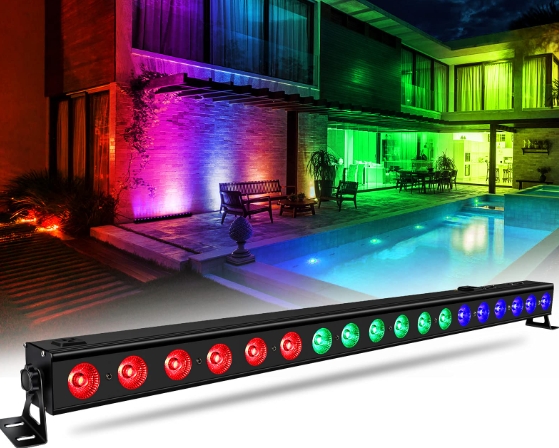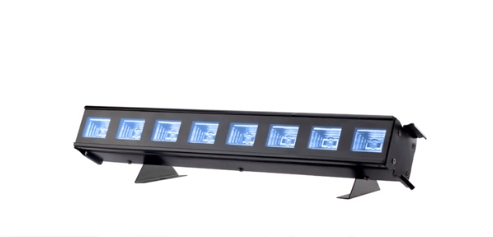Yellow River Lighting Since 1999, professional lighting manufacture focusing on Moving head light and Led light!
LED Stage Light Bars vs. Traditional Stage Lighting: Pros and Cons
Introduction
Stage lighting plays a crucial role in creating a captivating visual experience during live performances. Over the years, the industry has witnessed significant advancements, including the introduction of LED stage light bars. These innovative lighting solutions have revolutionized the way stages are lit. In this article, we will compare LED light bars with traditional stage lighting, exploring their pros and cons to understand which
option best suits various performance scenarios.
1. Understanding LED Light Bars: Introduction and Advantages
2. Traditional Stage Lighting: A Legacy of Brilliance
3. Comparing Performance and Flexibility
4. Energy Efficiency: A Spotlight on LED Light Bars
5. Cost Considerations: Evaluating Long-Term Investments
6. Durability and Maintenance: Weighing the Options
7. Environmental Impact: A Sustainable Approach
8. Control and Customization: Tailoring the Lighting Experience
9. Suitability for Different Performance Spaces
10. The Future of Stage Lighting: Shifting Paradigms
1. Understanding LED Light Bars: Introduction and Advantages
LED light bars have gained popularity in recent years due to their energy efficiency, compact design, and longevity. Unlike traditional stage lighting fixtures, which usually comprise incandescent or halogen lamps, LED light bars use light-emitting diodes to produce illumination. LED technology boasts several advantages, including:
- Energy-efficiency: LED stage light bar consume significantly less energy than traditional lighting sources. This energy efficiency results in cost savings and a reduced environmental impact.
- Longevity: LEDs have a remarkable lifespan, often lasting up to 50,000 hours or more. This extended lifetime reduces the need for frequent lamp replacements, minimizing maintenance costs and disruptions during performances.
- Heat emission: LED light bars produce less heat compared to traditional stage lighting fixtures. This characteristic not only improves safety but also prevents the stage and performers from becoming uncomfortably hot.

2. Traditional Stage Lighting: A Legacy of Brilliance
Traditional stage lighting has been the backbone of the industry for decades. From powerful spotlights and followspots to gels and filters, traditional fixtures have consistently delivered striking visual effects. Key advantages of traditional stage lighting include:
- Warmth and character: Traditional lighting solutions offer a distinctive warmth and color rendering that some lighting designers find irreplaceable. The unique qualities of incandescent lamps and halogen bulbs can create a timeless ambiance on stage.
- Versatility: The range of available fixtures, lamps, and lenses in traditional stage lighting offers endless possibilities for designers to achieve specific moods, textures, and atmospheres.
- Established industry standards: Due to its long-standing presence, traditional stage lighting has established conventional industry practices, making it easier for professionals to collaborate and share equipment.
3. Comparing Performance and Flexibility
When it comes to performance, both LED stage light bar and traditional stage lighting have their advantages. LED light bars excel in certain areas while presenting limitations in others:
- Intensity and brightness: Traditional stage lighting fixtures often provide higher light output, making them ideal for large stages or productions that require brighter illumination. In contrast, LED light bars offer a more focused and precise beam, suitable for creating intricate lighting designs.
- Color options and control: LED light bars offer a diverse range of colors and the ability to mix and match them seamlessly. Traditional stage lighting, on the other hand, may require additional filters or gels to achieve specific colors.
- Flexibility and portability: LED stage light bars are lightweight, compact, and easy to transport, making them suitable for touring and frequently changing performance spaces. Traditional fixtures, though adjustable, tend to be bulkier and may require more effort to install and uninstall.
4. Energy Efficiency: A Spotlight on LED Light Bars
One of the most substantial advantages of LED light bars over traditional stage lighting is their energy efficiency. LED technology enables a significant reduction in power consumption, resulting in both financial and environmental benefits:
- Reduced energy costs: As LED light bars consume less power, productions using this technology experience a noticeable decrease in electricity expenses. The long-term savings can be substantial, making LED light bars financially attractive.
- Environmentally friendly: With global concerns about energy conservation and emissions, LED light bars provide a sustainable alternative to traditional lighting. The lower energy usage reduces carbon footprint, contributing to a greener industry.

5. Cost Considerations: Evaluating Long-Term Investments
While LED light bars may require a higher upfront investment compared to traditional stage lighting fixtures, it's essential to assess the long-term cost implications. Here are a few factors to consider:
- Lifespan and maintenance expenses: LED light bars have a significantly longer lifespan than traditional fixtures. This means fewer lamp replacements and lower maintenance costs over time. Therefore, although the initial cost might be higher, LED light bars may prove more cost-effective in the long run.
- Power consumption: As mentioned earlier, LED light bars consume less electricity, resulting in reduced energy bills. The long-term energy savings may offset the initial investment and contribute to substantial financial advantages.
- Rental vs. ownership: Another aspect to consider is the frequency of equipment use. If a production only requires occasional use of stage lighting, renting traditional fixtures may be a more sensible choice. However, for more frequent or ongoing lighting needs, investing in LED light bars may be a more cost-effective solution.
6. Durability and Maintenance: Weighing the Options
Durability and maintenance requirements are essential factors when comparing LED light bars and traditional stage lighting. Consider the following points:
- LED light bars: LED technology is known for its durability and resistance to shocks and vibrations, making them suitable for touring productions and intense live performances. Additionally, LED light bars do not contain fragile filaments or glass components, reducing the risk of damage during transportation.
- Traditional fixtures: While traditional lighting fixtures can also withstand frequent handling, they may be more susceptible to damage due to their delicate components. Fragile filaments and glass bulbs can break, requiring replacements and increasing maintenance costs.
7. Environmental Impact: A Sustainable Approach
With an increasing focus on sustainability, the environmental impact of stage lighting is a significant consideration. LED light bars provide notable advantages over traditional lighting solutions in this aspect:
- Lower carbon footprint: The reduced energy consumption of LED light bars translates into lower carbon emissions, contributing to a greener environment. The overall sustainability of productions can be improved by switching to LED technologies.
- Toxicity and waste reduction: Traditional lighting fixtures, such as those containing high-pressure mercury vapor lamps, require proper disposal due to environmental concerns. On the other hand, LED light bars do not contain hazardous materials, making them easier to recycle or dispose of responsibly.
8. Control and Customization: Tailoring the Lighting Experience
Control over the lighting experience is of utmost importance for stage productions. Both LED light bars and traditional fixtures offer various control options, including:
- LED light bars: With modern control systems, LED technology enables sophisticated lighting effects and allows lighting designers to achieve intricate color mixing and dynamic changes seamlessly. LED fixtures often come with wireless control capabilities, making it easier to adjust lighting cues from anywhere within the performance space.
- Traditional fixtures: While traditional lighting fixtures may lack the same level of precision and versatility in remote control, they have their own charm and unique qualities that some may prefer. In certain cases, analog control allows for more organic and spontaneous changes during performances.
9. Suitability for Different Performance Spaces
The choice between LED light bars and traditional stage lighting should also consider the specific requirements of different performance spaces. Here are some crucial factors to assess:
- Stage size and intensity: For larger stages or productions with high-intensity lighting demands, traditional fixtures may be the preferred choice. The higher light output and beam control are better suited for these scenarios. However, if the performance takes place in a smaller venue where precision is crucial, LED light bars can provide the necessary control and focused lighting.
- Venue restrictions: Some venues may have restrictions on the kind of lighting fixtures allowed due to structural or safety concerns. In such cases, LED light bars, with their compact design and lower heat emission, could be a more suitable option.
10. The Future of Stage Lighting: Shifting Paradigms
As technology advances, the stage lighting industry continues to evolve. Both LED light bars and traditional stage lighting have their roles in this transformative journey. The future of stage lighting is likely to witness further improvements and innovations in three key areas:
- Integration of LED technology: LED light bars will become more advanced, offering greater possibilities for customizing lighting designs and creating immersive experiences. The industry will see increased adoption of LED technologies, benefiting from their energy efficiency and the freedom they provide to lighting designers.
- Hybrid solutions: The future may witness a combination of LED light bars and traditional stage lighting, offering the best of both worlds. By blending the advantages of each approach, lighting designers can achieve unparalleled creativity and flexibility.
- Smart lighting systems: With the rise of Internet of Things (IoT) and interconnected devices, stage lighting will become an integral part of smart venues. Lighting systems will seamlessly integrate with other technologies, and lighting cues can be automated and synchronized effortlessly.
Conclusion
In conclusion, understanding the pros and cons of LED stage light bars versus traditional stage lighting is vital when selecting the most suitable option for a performance. LED light bars offer energy efficiency, long lifespans, and focused lighting, whereas traditional fixtures bring character, warmth, and versatility to stage performances. The decision ultimately depends on the specific requirements of the production, the venue, and the vision of the lighting designer. As the industry progresses, it is likely that a blend of LED light bars and traditional fixtures will lead the way in creating captivating stage lighting experiences.















